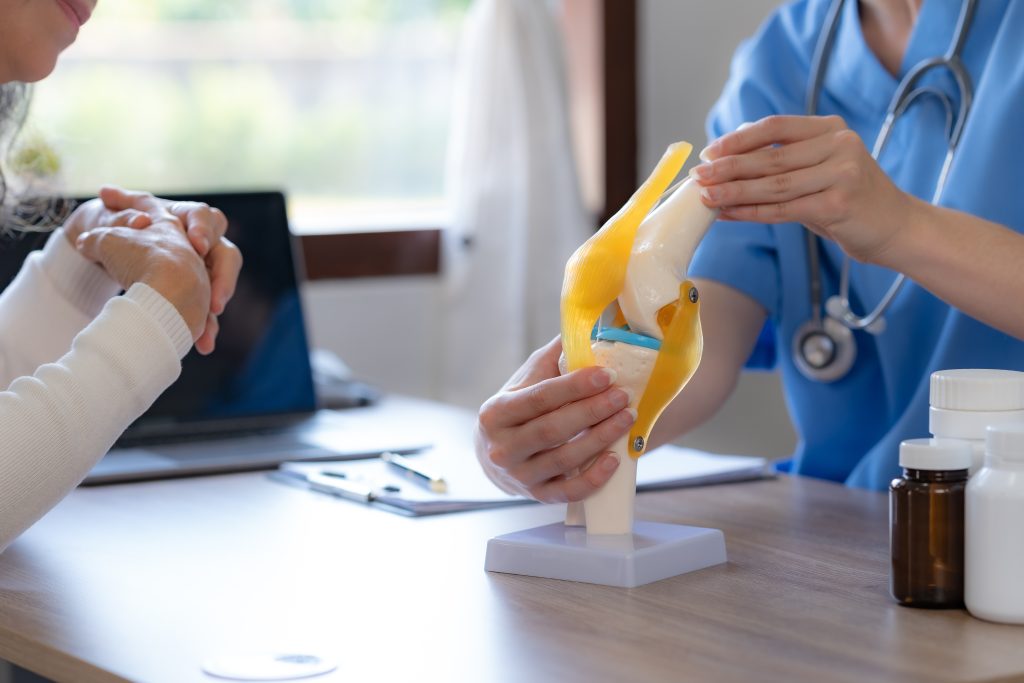Joint replacement surgery can be life-changing for those suffering from chronic pain, limited mobility, or joint dysfunction. If conservative treatments like physical therapy, medications, or injections haven’t provided adequate relief, joint replacement may be the next step toward regaining your independence and improving your quality of life. However, the idea of undergoing surgery can feel overwhelming, especially if you’re unsure about what to expect during the process.
At Valley Orthopaedic Specialists, we understand that joint replacement surgery can bring anxiety, and we’re here to help ease your concerns. This step-by-step guide will walk you through the entire process, from pre-surgery preparation to post-surgery recovery, so you’ll feel confident and informed every step of the way. Whether you’re considering surgery for your knee, hip, or another joint, this guide will help you better understand the journey.
Step 1: Pre-Surgery Preparation
The key to a successful joint replacement surgery begins with thorough preparation. Here’s what you can expect during this phase:
Consultation with Your Orthopedic Specialist
The first step toward joint replacement surgery is scheduling a consultation with an orthopedic specialist at Valley Orthopaedic Specialists. During this appointment, your orthopedic doctor will assess your medical history, current symptoms, and diagnostic imaging (such as X-rays or MRIs) to determine if joint replacement surgery is appropriate for your condition. Your doctor will explain the procedure, risks, benefits, and alternatives, and answer any questions you may have. You’ll also have an opportunity to discuss your goals for surgery and recovery.
Pre-Operative Tests and Evaluations
Before surgery, you’ll undergo several tests to ensure you’re healthy enough for the procedure. These may include:
- Blood tests to check for any underlying conditions.
- An electrocardiogram (ECG) to assess heart health.
- Imaging studies like X-rays to determine the extent of damage in your joint.
Additionally, your doctor will discuss medications you may need to stop taking before surgery, such as blood thinners, and guide you on what to eat or drink before the procedure.
Preparing Your Home for Recovery
It’s also important to prepare your home for a smooth recovery. You may need to arrange for help with daily tasks, like dressing or meal preparation, as you recover. Some patients find it helpful to move essentials to a lower height to reduce the need for bending. Your orthopedic doctor may also recommend assistive devices, such as crutches, a walker, or a raised toilet seat, to help you during your recovery.
Step 2: The Day of Surgery
On the day of surgery, you’ll arrive at the hospital or surgical center with plenty of time before the procedure. Here’s what you can expect:
Check-In and Anesthesia
Once you check in, your orthopedic surgeon will discuss anesthesia options with you. In most joint replacement surgeries, general anesthesia or regional anesthesia (such as a spinal block) is used. You’ll be asleep during the procedure and won’t feel any pain.
The Surgical Procedure
The actual joint replacement surgery typically takes between 1 to 2 hours, depending on the joint being replaced and the complexity of the case. During the surgery, the damaged joint is removed and replaced with an artificial prosthesis designed to restore function and reduce pain.
For example:
- Knee replacement: The damaged portions of the knee joint are removed and replaced with metal and plastic components that mimic the function of a healthy knee.
- Hip replacement: The damaged ball and socket of the hip joint are replaced with a prosthetic socket and ball, often made of metal, ceramic, or plastic.
The surgery is performed by a skilled orthopedic surgeon using advanced techniques to ensure precision and optimal outcomes. Your surgical team will monitor you closely throughout the procedure to ensure your safety.
Step 3: Post-Surgery Recovery
After surgery, your recovery begins. Understanding the recovery process can help set expectations and relieve any anxiety about what comes next.
Recovery Room and Immediate Care
Once the surgery is complete, you’ll be moved to a recovery room where medical staff will monitor you closely as the anesthesia wears off. You may experience some grogginess or discomfort, but this will pass as the anesthesia dissipates. Pain medications will be provided to help manage any post-surgery pain.
Hospital Stay
For most joint replacement surgeries, you’ll spend a few days in the hospital to monitor your recovery. During this time, your care team will help you with pain management, ensure you’re comfortable, and begin your physical therapy. Physical therapy often starts the day after surgery. The goal is to gradually improve your range of motion and strength. Your physical therapist will guide you through exercises designed to help you regain mobility in your new joint.
Pain Management
Pain management is an essential part of your recovery process. After joint replacement surgery, you may experience some discomfort, swelling, and stiffness, which is normal. Your orthopedic doctor will work with you to ensure that your pain is well-managed and may prescribe pain relievers, anti-inflammatories, or nerve-blocking medications.
Walking and Moving
You’ll start with simple movements, such as sitting up, standing, and walking with assistance. Depending on the joint replaced, most patients are able to walk short distances with the help of a walker or crutches within a day or two of surgery. For hip and knee replacements, the first steps are critical to your recovery, and your therapist will guide you through safe techniques.
Step 4: Home Recovery
Once you are ready to go home, you’ll likely continue your recovery on an outpatient basis. Here’s what to expect during this phase:
Physical Therapy
Physical therapy is crucial for regaining strength and mobility after joint replacement surgery. Most patients will need to attend physical therapy sessions 2-3 times per week for several weeks or months, depending on the joint replaced and your progress. At home, you will be given exercises to perform between physical therapy appointments. These exercises are designed to help increase joint flexibility, strengthen the surrounding muscles, and improve balance and coordination.
Pain and Swelling Management
Swelling is common after joint replacement surgery, and it may last for several weeks. You can manage swelling with elevation, ice packs, and compression stockings. Your orthopedic doctor will also provide guidance on when to resume regular pain medication.
Follow-Up Appointments
After surgery, you’ll have follow-up appointments with your orthopedic doctor at Valley Orthopaedic Specialists to ensure proper healing and track your progress. X-rays may be taken to check the placement of the prosthetic joint, and adjustments to your recovery plan may be made as needed.
Step 5: Long-Term Recovery and Resuming Activity
The full recovery time for joint replacement surgery can take several months, with most patients returning to normal activities within 6 to 12 weeks. However, it can take up to a year for the joint to fully heal and for you to regain maximum strength and function. Your orthopedic doctor will provide guidance on when it’s safe to resume specific activities, such as driving, exercising, or returning to work. Regular exercise and strength training will continue to improve your joint’s functionality and help you maintain the results of the surgery long term.
Why Choose Valley Orthopaedic Specialists?
At Valley Orthopaedic Specialists, we specialize in joint replacement surgeries, including hip, knee, and shoulder replacements. Our team of orthopedic specialists is dedicated to providing expert care throughout your surgical journey. Whether you are looking for a consultation or need post-surgery support, we are here to guide you every step of the way.
Start Your Recovery Journey Today
Joint replacement surgery can dramatically improve your quality of life, helping you return to an active, pain-free lifestyle. With the right preparation, care, and support, you’ll be back on your feet in no time. If you’re considering joint replacement surgery, schedule a consultation with one of our expert orthopedic doctors across Connecticut. Serving Shelton, Oxford, and Fairfield, we’re here to help you regain mobility and live without pain.

